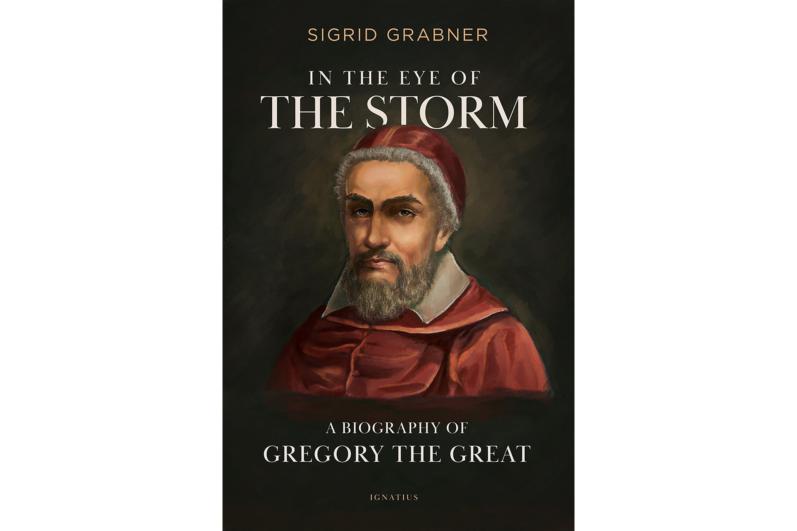Biography helps readers understand why Pope Gregory is 'the great'
"In the Eye of the Storm: A Biography of Gregory the Great" by Sigrid Grabner. Ignatius Press (San Francisco, 2021). 265 pp, $17.95.
"Great" is not an official church title, nor have church historians readily bestowed it. Among the 265 deceased popes, only four have that moniker: Leo I, Gregory I, Nicholas I and John Paul II.
Being deemed "great" might be subjective, but it is generally understood that the one to whom great is attached was an outstanding leader, made an impact on the life of the church, be it in structure, spirituality, practices and theology, and influenced the world at the time of his pontificate.
In "In the Eye of the Storm," (originally published in German in 2009), Sigrid Grabner shows why Gregory is among the church's greats.
In his prayerfulness and his adherence to the Gospel, Gregory, as a young adult, asked the question that Catholics within all generations have asked: "What is it you want me to do, Lord?"
God provided multiple answers.
Born into nobility of parents who, according to Grabner, saw themselves as caretakers of what they had been given, Gregory was immersed in the stewardship expected of all Christians.
Whether it was in service as prefect to the people whose Rome had been destroyed, as a monk at St. Andrew's Monastery, which he established, as papal envoy to Constantinople, as confidant of a pope, or as pope himself, Gregory lived a life of service, diligently using his God-given intellect and his skills as an administrator, communicator, diplomat and spiritual guide.
For Gregory, the most important part of his papal ministry, Grabner notes, was preaching. Thus, she draws heavily from Gregory's homilies, allowing readers to see the depth of the pope's spirituality and to reflect upon his words. For example, "Own the things of the earth without letting yourselves be possessed by them. ... Make use of temporal things, but attach your desire only to those that are eternal."
Gregory demonstrated concern and love for the poor throughout his life, and, as pope, focused on how they were to be treated, e.g., "We must therefore respect them all: It is all the more necessary for you to be humble with all of them, as you do not know which of them is Christ."
As a historian, Grabner gives context for Gregory's life, a vivid picture of the state of the world and the church in the sixth century. She includes enough details about invasions, wars, illness, corruption and poverty to let readers know the setting for the physical, emotional, spiritual and institutional struggles Gregory endured. A chronology aids in understanding the events of that period.
One book certainly can't explore every aspect of Gregory's life in depth. Each facet of his life, i.e., spirituality, theology, diplomatic work, government service, etc., warrants extensive study and discussion. However, Grabner provides an engaging story, one that often reads like a historical novel in which heroes and villains are integral to its telling and in which the main character becomes well known to readers.
Those who want a solid introduction to Gregory's life will receive it; those who enjoy reading lives of the saints will be pleased with what is presented. All readers will come away knowing more about this much revered pope and with a better understanding of what defines greatness in the church.
- - -
Olszewski is the editor of The Catholic Virginian, biweekly publication of the Diocese of Richmond, Virginia.



















